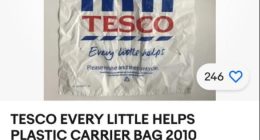
Amazon’s scale and distribution capabilities mean it has the basics covered but customers want more than just the basics.
June 5, 2019 5 min read
Opinions expressed by Entrepreneur contributors are their own.
Love it or hate it, Amazon is king in the ecommerce world. The retail giant recently joined Apple as the second-ever American corporation with a valuation exceeding $1 trillion. In the United States, Amazon captures 49 cents of every dollar spent on products online.
It hasn’t always been this way. Early investors will remember how Amazon survived several difficult years so it could grow at breakneck speed. Even now, the company still loses money on its Prime program. But Subscribe and Save, Amazon’s subscription replenishment program, is the whipped cream on top of the Prime membership model, and even with losses, the company is clearly thriving.
Subscription e-commerce retailers might think they should emulate Subscribe and Save, but Amazon just isn’t a great role model for up-and-coming subscription businesses. Amazon’s sheer scale, purchasing power and distribution capabilities mean it has the basics covered and that catching it may be impossible. The good news, though, is that life is about so much more than the basics.
Related: 17 Incredible Amazon Prime Facts and Stats
Forging your own subscription path.
Some retailers have tried to follow in Amazon’s footsteps, but they haven’t seen the same success. Take Chewy, for example. The online pet supply store is surviving in the cutthroat e-commerce world, which should be commended, but it lost millions of dollars last year and hasn’t been profitable since it launched. That could be due, at least in part, to the fact that Amazon already sells similar products, some of which are available through Subscribe and Save.
Perhaps Chewy and other e-commerce retailers could see more success and growth with a subscription that gives customers what Amazon can’t. Increasingly, customers look for more than just products delivered fast. They love to discover new things: feeling new textures, smelling new fragrances, trying new flavors and more.
Amazon might have cornered a huge swath of the e-commerce market, but it’s the area that represents utility, commodity and efficiency. The areas of personalization, curation, and relationship-building are where emerging subscription retailers can stand out. With the following four steps, you can map a new route and differentiate yourself from Amazon.
Related: You Too Can Grow a Successful Subscription Company. Here’s How.
1. Pump up your packaging.
Amazon is great at what it does, and you’ll never succeed by trying to emulate it. Instead, you should go the opposite direction. Take Amazon’s packaging, for example. The company has made the brown box with the Amazon Prime tape famous, but that doesn’t change what it is: a simple brown box.
Make your box stand out from your competitors by using high-quality materials and bright colors in your packaging. Take PLAY! by Sephora, for example: The beauty brand’s monthly subscription box is decorated with bold stripes and pops of color that draw attention and build anticipation for what’s inside. With a simple design choice like Sephora’s, you can start to differentiate yourself right away.
2. Curate your offerings.
While you’ll likely want to start your subscription with five to 10 products, limit how many varieties of each you introduce. Too many choices can be paralyzing. In fact, a wealth of options can actually create doubt and dissatisfaction for consumers who might always wonder whether they made the right choice, according to Business Insider.
Instead of offering a large variety of products upfront, save new and fun choices for upsells and cross-sells to enrich your customers’ experiences. Use your purchase history data to anticipate and meet a need or offer a surprise you know your subscribers will like. Such tactics can help solidify your consumer-brand relationships and increase lifetime value.
3. Use storytelling to connect.
Amazon is solely focused on its products. It’s essentially a search engine that consumers use to find and compare items — no relationship required. Here, you actually have an advantage over Amazon because your audience is most likely in a niche. Collect and analyze consumer data to build a strong brand story that appeals to your customers’ interests, desires and emotions.
Such a strategy will pay off: According to data from Motista, consumers who feel they have an emotional connection with a particular brand have a lifetime value that’s 306 percent higher than customers who don’t have that connection. Tap into your customers’ emotions to create that value with a brand story and messaging present in every box you ship.
Related: 5 Ways to Get to the Heart of Emotional Marketing
4. Effect positive change.
As you polish your brand story, consider whether acts of charity or other good deeds would make an impact with your target audience. If your customers care about environmental concerns, you should focus on sustainable packaging and shipping methods. If they care about helping people in underprivileged communities, consider donating to a related charity.
You could also consider something like the “one for one” approach that’s been popularized by companies such as TOMS and Bombas. TOMS, for example, donates a pair of shoes to someone in need for every pair a customer purchases. But if you also choose to give back, make sure your customers know they’re the ones really supporting the cause.
There’s no doubt that Amazon is an e-commerce powerhouse and that the company has revolutionized the way we buy and sell products. Still, its immense size means that it can’t always focus on the details needed to truly win customers over. That’s where physical subscription e-commerce companies can shine — delivering not just high-quality products, but a valuable relationship and experience as well.
This article is from Entrepreneur.com









